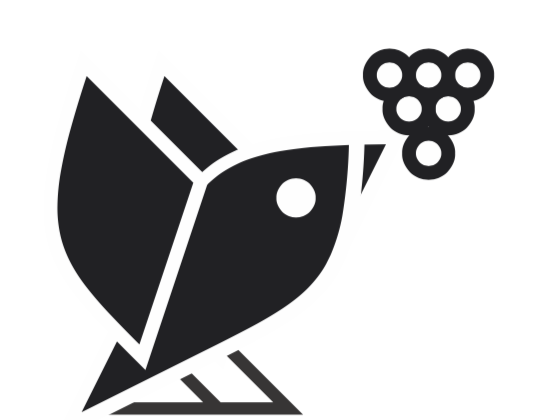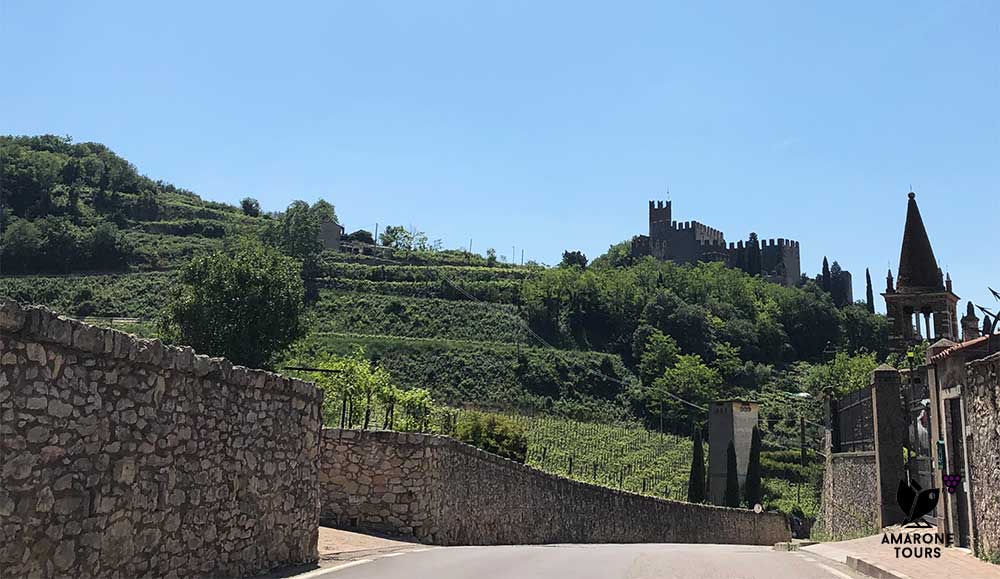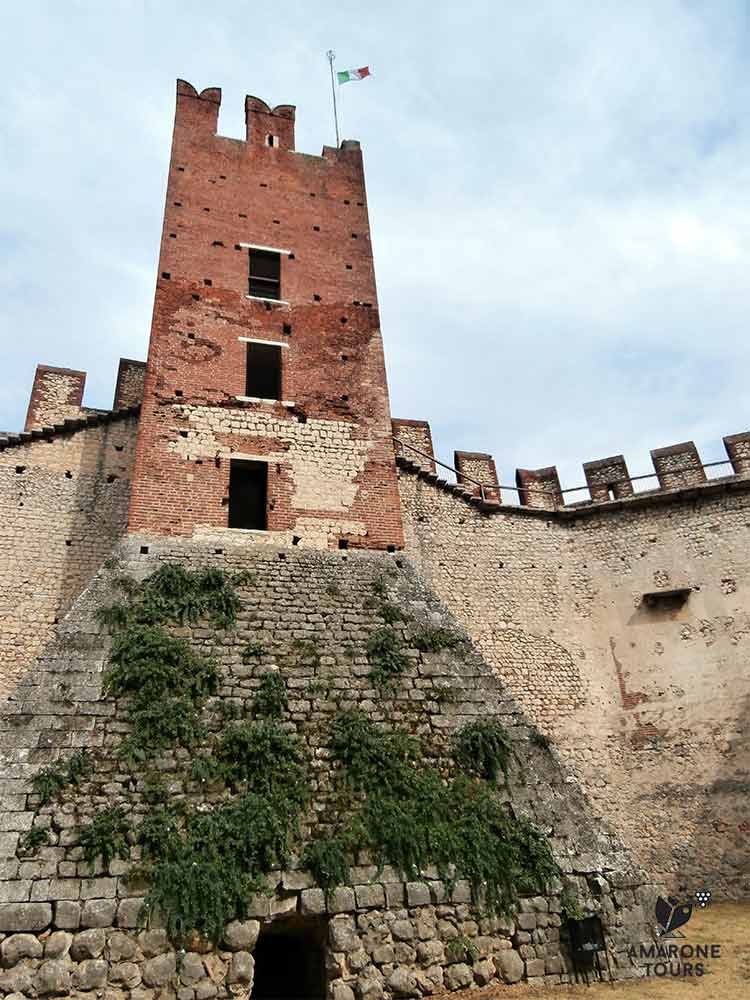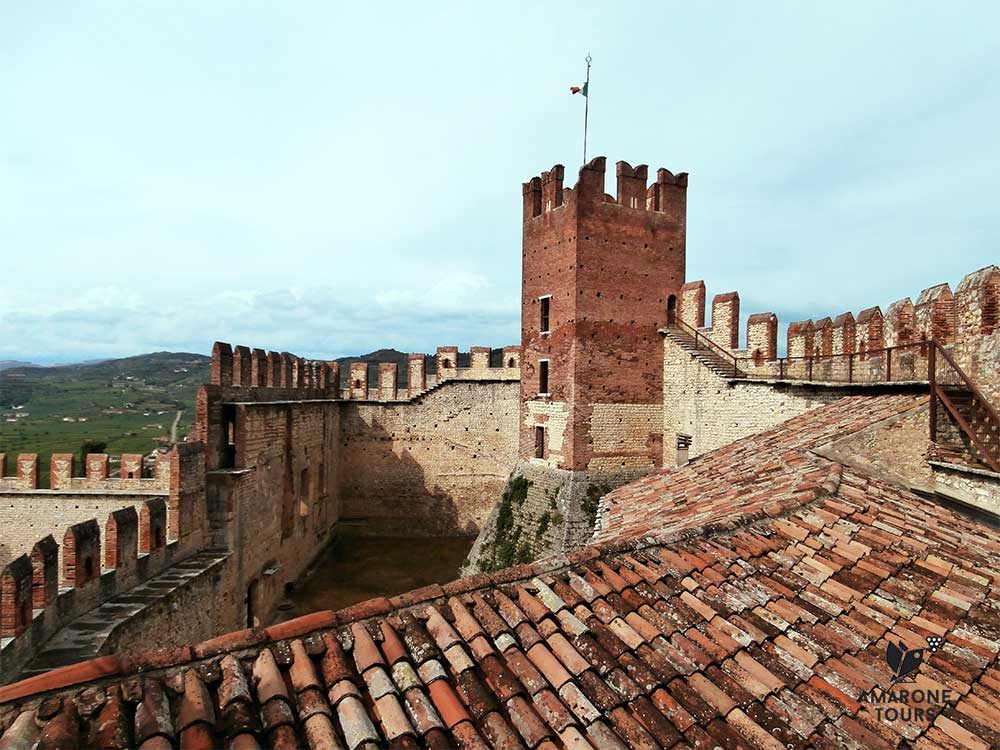The name of the famous Italian white wine Soave comes from a middle age village in the eastern end of Verona province. It is located at the foot of a hill on top of which stands an impressive middle age castle. The fortress, as it is today, was built by the Scala family, the ruling family of Verona in the XIV Century.
Tours
The castle is open to the public. From its keep you will admire a breathtaking view over the surrounging valleys and hills covered with vineyards. It is the perfect complement to a wine tasting tour in Soave.
The History
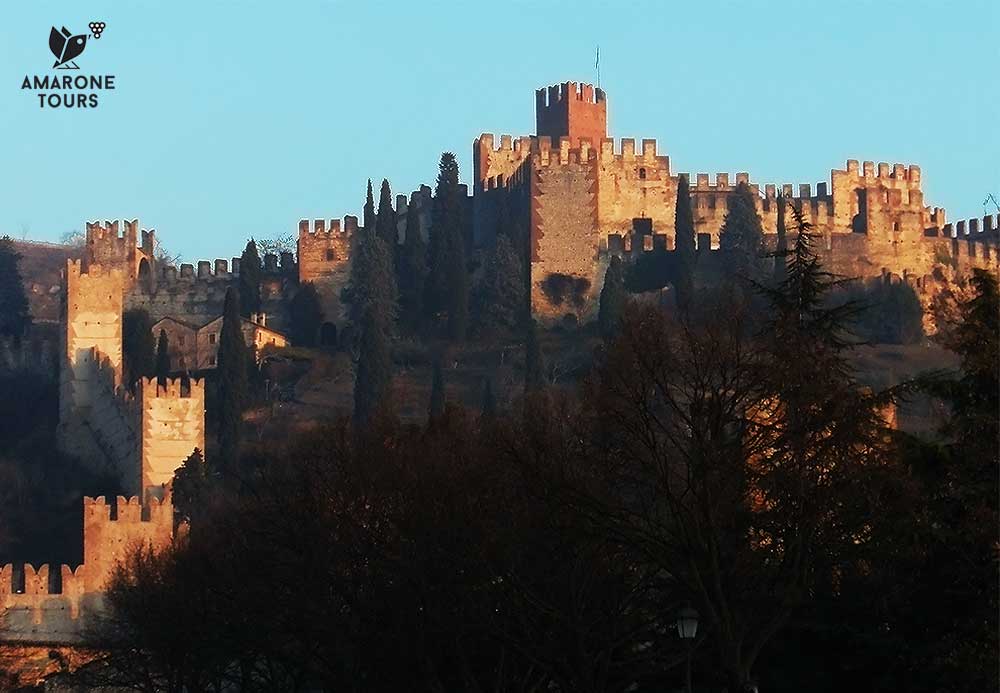
Roman Age
Where today stands the castle of Soave, in Roman age there was almost certainly a watch tower. From the top of the hill it controlled the trafic on the Via Postumia, an important road linking the north east with the north west of Italy. Via Postumia connected Genoa with Aquileia and crossed also many towns in northern Italy such as Verona, Vicenza, Padua, Cremona. From the highest tower of Soave castle it is still possible to admire 360° view above the valleys and the A4 motorway, running along the same route the via Postumia followed more than 2000 years ago.

The keep, the highest tower of Soave Castle. Its different layers shows the very old age 
The Middle Age
In Italian language the word soave means “sweet“, “gentle“. Many believe that the name of the village comes from the excellent white wine produced here, but in fact there is a different explanation.
With the fall of the Roman Empire in 476 a.D. the village found itself on the way of the Germanic tribes that swarmed the Italian peninsula coming from central and eastern Europe. One of these Germanic tribes, the Svevi, took control of the former Roman watch tower and settled. It is probably from the name of this tribe, Svevi, changed over time, that the name Soave derives.
Through the centuries this hill outstratched over the Padana plain kept its important strategic role. From documents of the the X century it appears how the castle belonged to the Count Sambonifacio from Verona. In 1270, the Greppi family who owned the castle at the time sold it to the Comune (city state) of Verona.
The Scala Family
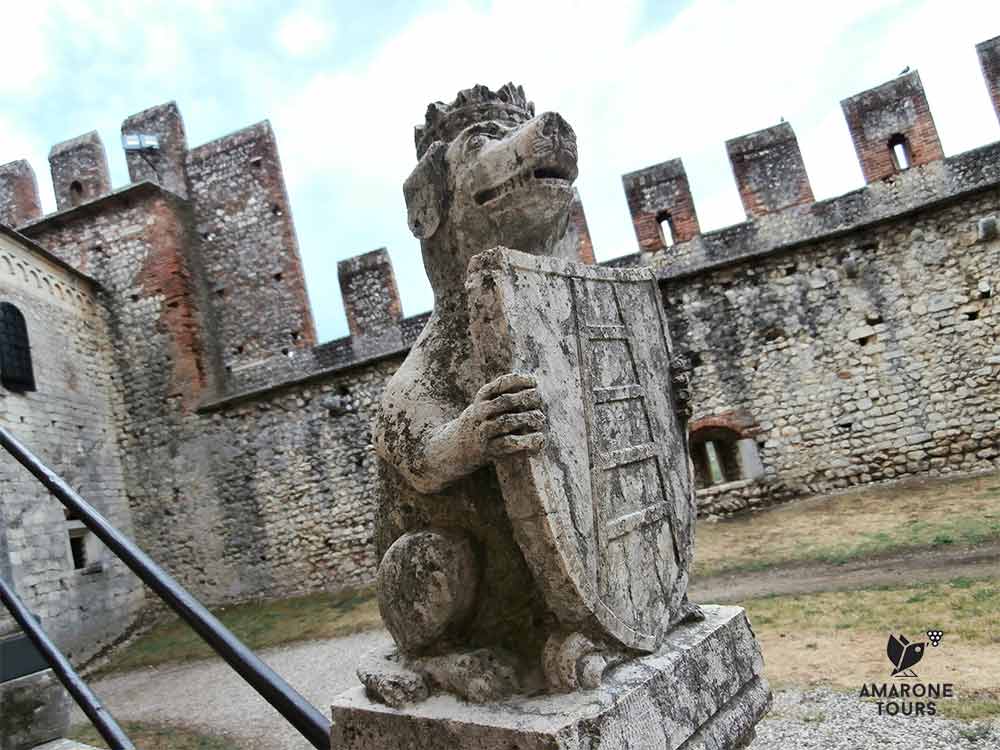
In XIV century, the Scala family took the power in Verona and started to expand its dominion. To keep the control over the conquered land they built castles, enthrusted to their vassals.
Under the Scala family (1259-1387) Soave’s castle grew in importance. The ruling family of Verona understood the strategic importance of the castle and restored and renovated it. In 1379 Cansignorio della Scala, lord of Verona, built the wall that still today protects the whole village of Soave.
Venetian rule
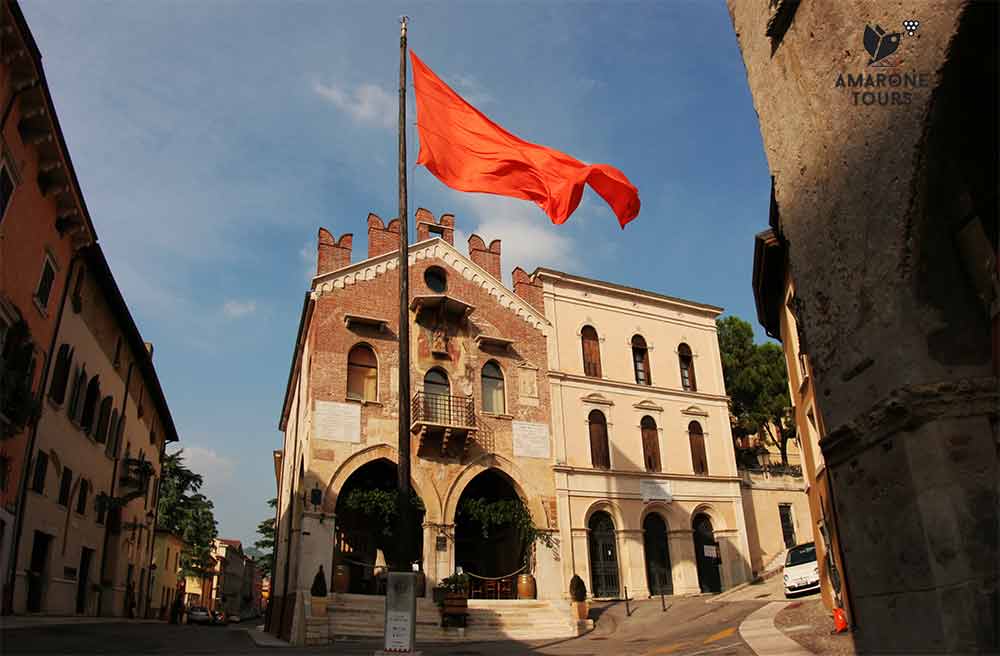
With the end of the Scala family rule Soave’s catle fell under the Visconti family from Milan and then the Da Carrara family from Padua. Eventually, in 1405, with Venice expansion in the inland, it became part of the vast territory of the Venetian Republic.
In 1508 Soave became a battle field in the war between the Venetian army and the forces of the Holy Roman Empire led by the Emperor Maximilian I who set ablaze the village and took control of the castle. In 1511, after an heroic attack, Venetians were able to take back the control of the stronghold. From that moment the whole region experienced a long period of peace that lasted until the end of 1700s.
The Abandon
In the meantime the strategic role of castles had changed. Peace, but most of all changes in warfare had made castles worthless. High but thin walls, very efficient in keeping out soldiers, arrows and spears, proved weak and defenceless in front of gun powder and cannons. Soave’s castle was abandoned, transformed into a farm and gradually fell into ruins.
The Restoration
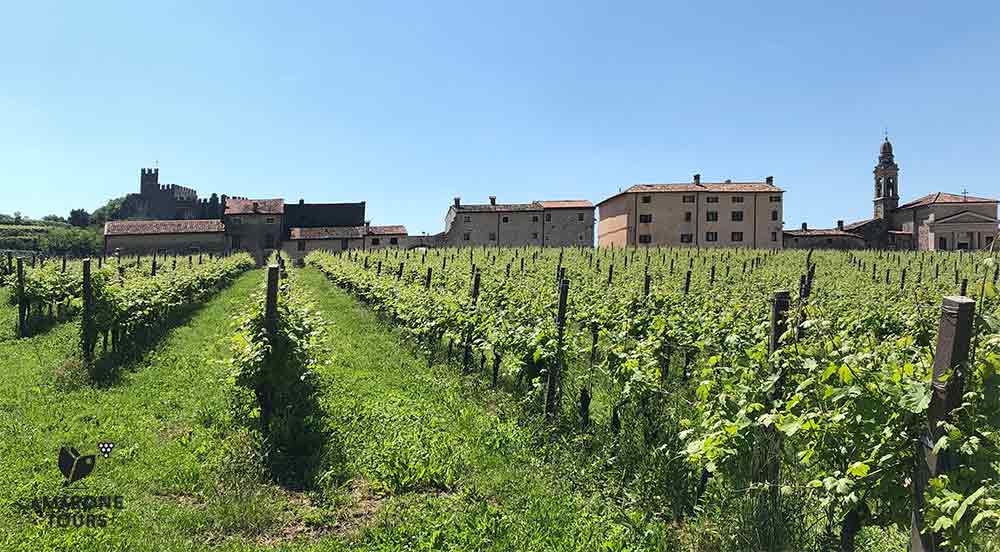
In 1889 Giulio Camuzzoni, first major of Verona after the unification of Italy, bought the remains of the castle and started a thoughtful ∫ that brought the Soave castle back to its ancient splendour.
The castle today is open to the public and can be visited together with the tourist guides of Amarone Tours. From the top of its keep it is possible to admire a breathtaking view over the surrounding hills, the valley below and the ‘sea’ of vineyards that covers the whole area around the castle as far as your eyes can reach.
Soave and the Castle
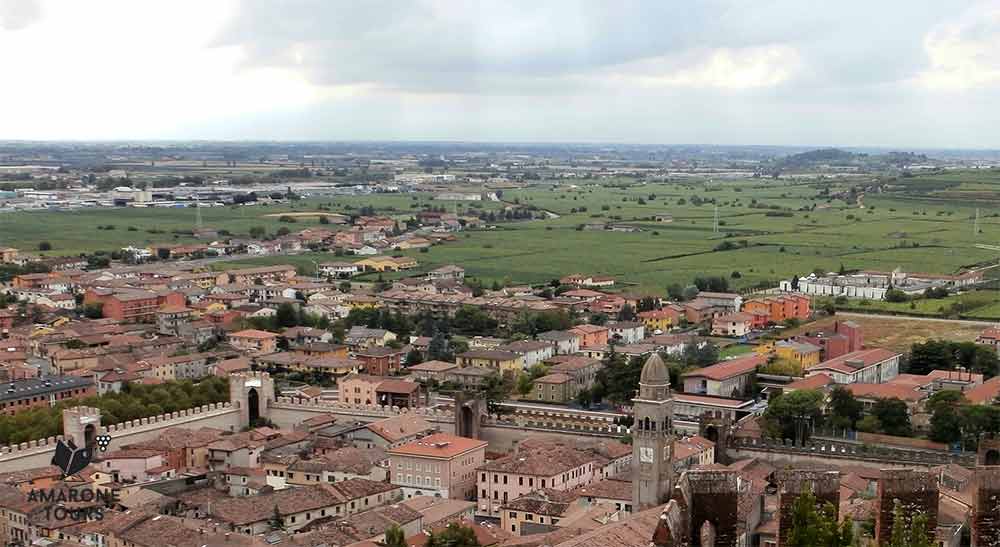
Soave’s castle is a tyical Middle Age military building. It was built on top of Mt. Tenda on a highly strategic position from which it dominates the valleys below. Its walls surround an area of 5882m² (7034yds²). It includes the main tower and three concentric circles of walls protecting three courtyards and then extending to enclose the whole Soave village.
You can reach the castle walking the steep path that rises from the central square of Soave. Alternatively it is possible to go with a car or bus along the road that twists and turns on Mt. Tenda northern side.
The Visit
Castle main entrance faces north, protected by an old drawbridge and a tower with a basrelief representing St. George and the dragon. After the main entrance you will find the first courtyard with the remains of a X century church. The villagers of Soave took shelter in it in case of attack, praying inside the church.
From another gate protected by an iron reinforced door there is access to the second courtyard characterized by a fading fresco on one of the towers. The fresco represents the Virgin Mary giving shelter to the population under her mantle. The painting bears a date: 1321.
A small ladder gives access to the last couryard, the last defence in case the enemy managed to access all other courtyards. Here there is the main tower, the keep, that in peace time was used as dungeon. In the basemant of the tower, during restoration works in 1800s, many human bones were found.
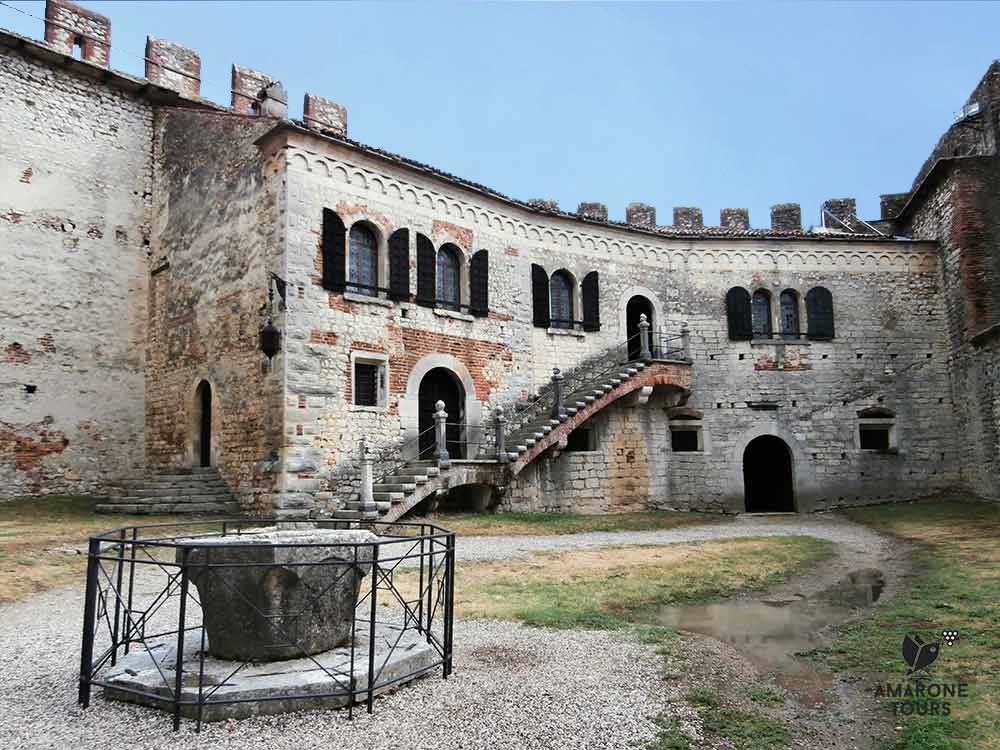
On one side of the courtyard, there is also a well, as old as the castle. Water was a vital in case of a long siege.
A bit further a wide voulted room was the residence of soldiers and is still decorated with armours, helmets and old weapons.
Through a stone stair there is the access to the above floor, the residence of the lord of the castle. Rooms have been restored mantaining and restoring their Middle Age decorative elements, coat of arms and original paintings.
Through another steep staircase it is possible to access the battlements and the keep, the highest point of the castle. From there you will enjoy a breathtaking view over the whole Soave territory and its vineyards.
Sightseeing and Winery Tours
Inside the old village there are many other interesting sights. Piazza Antenna, the central square with the flagpole for the old Venitian standard. Cavalli palace, old home of the local lord, and the middle age Court of Law.
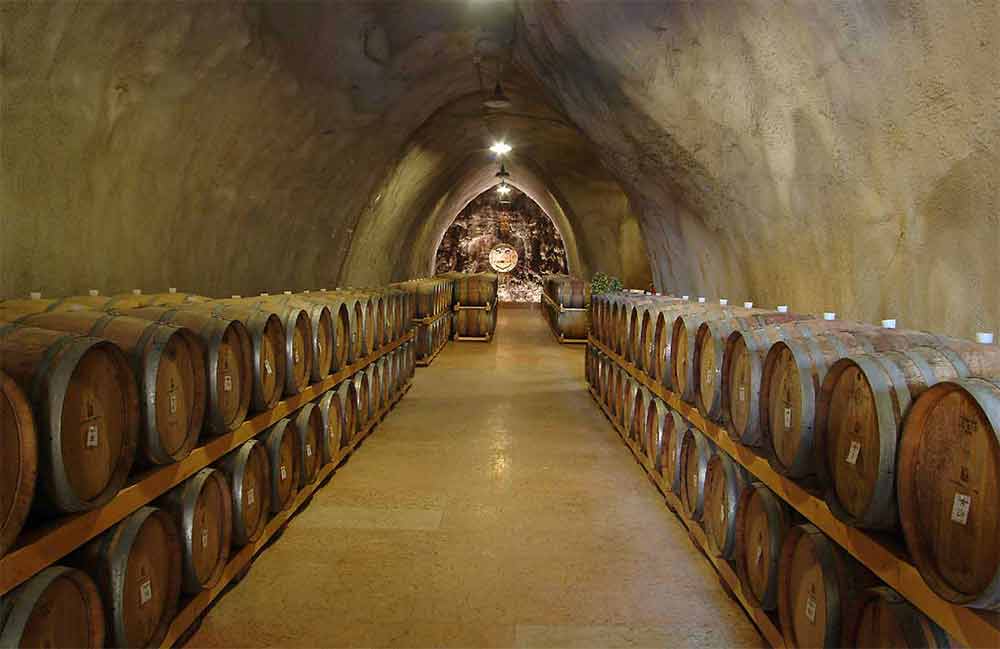
Some excellent wineries are located inside the village, others just outside the walls, in the nearby village of Monteforte d’Alpone or up on the hills surrounding the castle.
With an half day wine tour in Soave it is possible to visit a winery, the castle and have a walk in the old town.
With a full day tour it will be possible to add a visit to few more wineries, together with a panoramic drive up to Castelcerino and to try local cuisine in one of the many restaurant in the area.
Contact us for further information or to book a tour in Soave.
